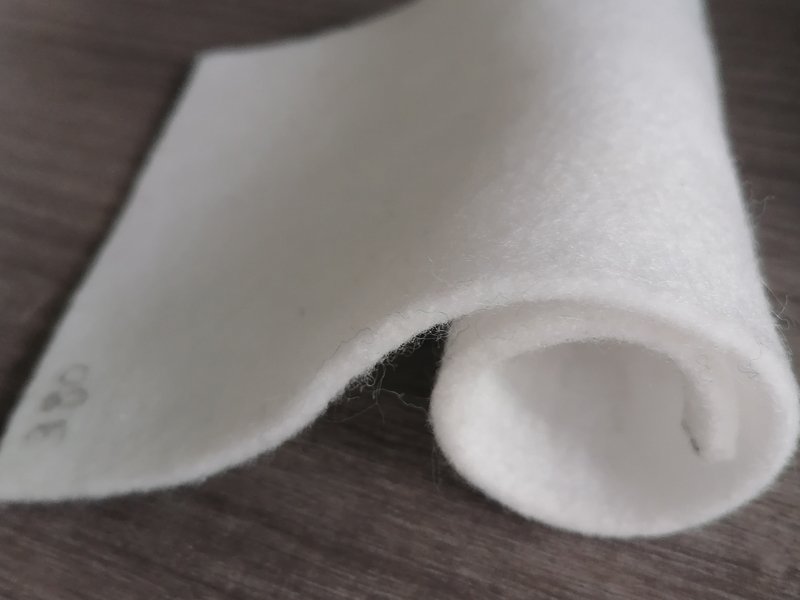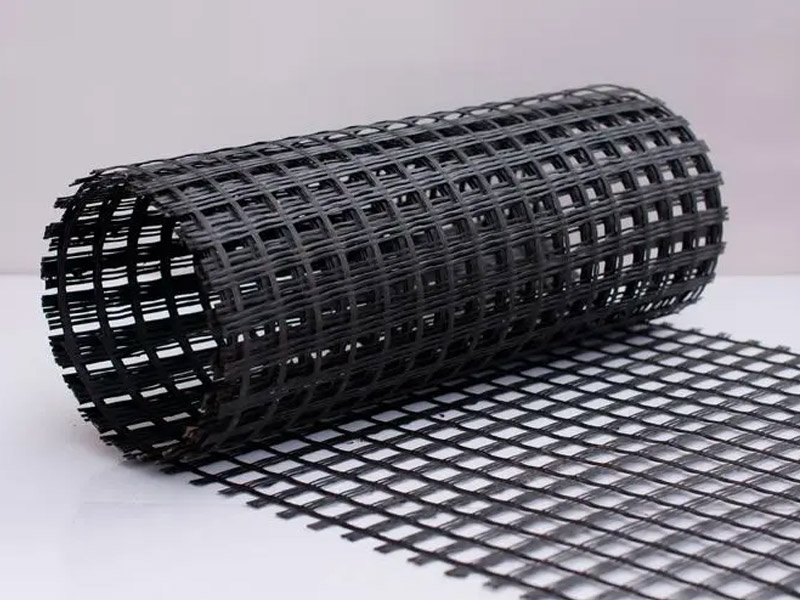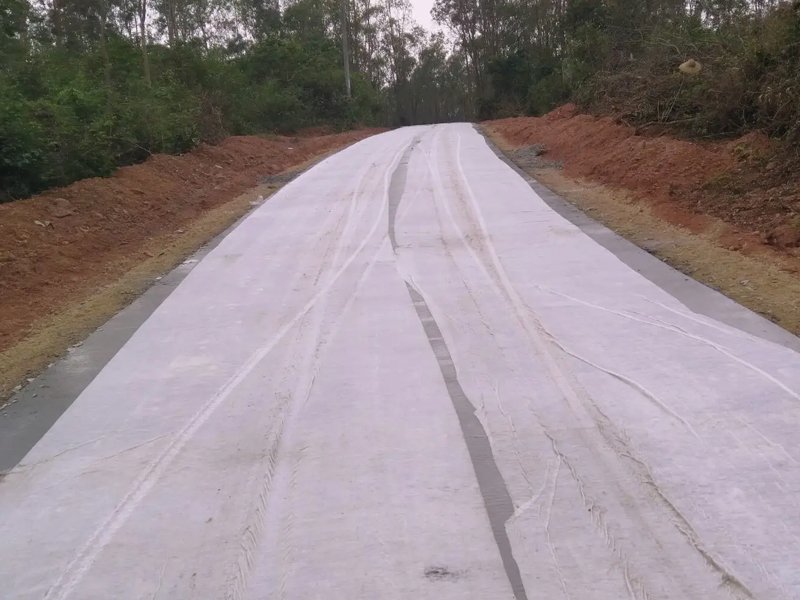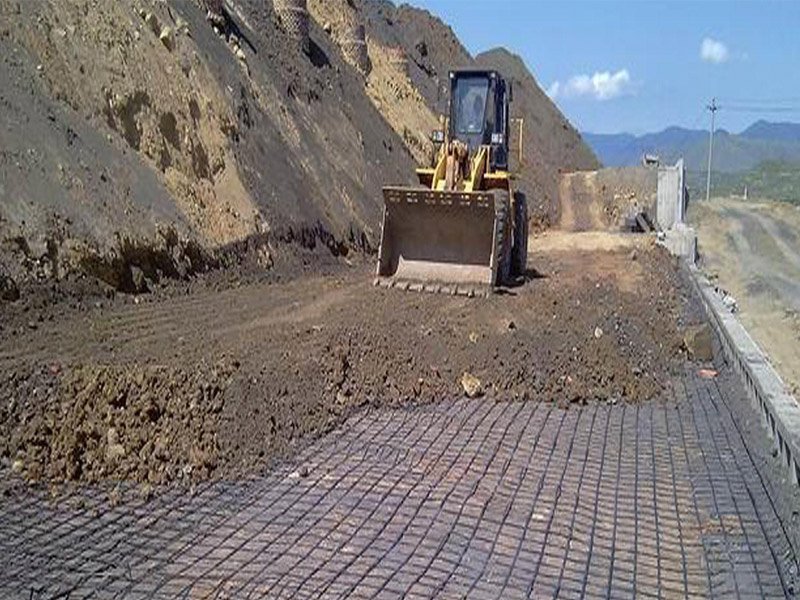Geotextile and geogrid are two types of geosynthetics commonly used for erosion control, soil stability, and drainage applications. Geotextile is primarily designed for separation, filtration, and drainage, while geogrid is specifically engineered as a reinforcement material. Unlike geotextile, a geogrid is not intended to separate different types of fill materials. For example, if the subgrade soils become saturated, water can easily flow through the openings in the geogrid.
BPM Geosynthetics specializes in manufacturing high-quality geotextile and geogrid in bulk order at competitive factory prices. Our products can be customized in terms of size and thickness to meet the specific requirements of each project. In this article, we will compare geogrid and geotextiles and provide you with all the information you need to know.
1. What Are Similarities of Geotextile and Geogrid?
There are several similarities between geotextile and geogrid:
1.1 Complementary Use
Geotextile and geogrid can be used together in various projects. Their combined use can provide enhanced performance and benefits. The combination of geotextile and geogrid allows for improved soil reinforcement. The tensile strength of the geogrid significantly enhances the bearing capacity of the soil base and strengthens embankments. This integration helps distribute loads and dead weight stress evenly across the subgrade, leading to improved foundation bearing capacity and reduced uneven settlement.
1.2 Soil Reinforcement
Both geotextile and geogrid contribute to soil reinforcement. When integrated, the tensile strength of the geogrid significantly improves the bearing capacity of the soil base, increasing the strength of embankments. This helps evenly distribute loads and dead weight stress on the subgrade, improving its bearing capacity and reducing uneven settlement.
1.3 Improved Drainage
Geotextile and geogrid integration can meet the drainage requirements of construction and usage. They help facilitate proper water drainage, preventing water buildup and potential damage to the project.
The overall performance and effectiveness of the soil stabilization and reinforcement measures can be greatly enhanced by utilizing geotextile and geogrid together.


2. What Are Differences of Geotextile and Geogrid?
2.1 Different Material
Geotextile, also known as geotextile, is a geotechnical test composite material made of olefin composite material made of knitwear or knitwear. Its key is divided into non-woven geotextile and spun geotextile.
Geogrid is mainly divided into steel and plastic geogrid, glass fiber geogrid and polyester warp knitting polyester geogrid, etc., is a kind of high strength geomaterial with polypropylene as the main raw material.
2.2 Different Effect
The function of geogrid is to stabilize the subgrade and extend the service life of the road. The function of geotextile is isolation, filtration, drainage, reinforcement, protection and sealing.
2.2.1 The role of geotextile
Isolation effect: polyester staple fiber needle prick geotextile can be the particle size and other different density of building materials (such as sand particles, such as concrete, etc.) for isolation. The soil and water between the two materials are not lost, not mixed, maintain the structure and performance of the whole material, and strengthen the bearing capacity.
Filtration effect: geotextile has good air permeability and water permeability, so that the water flow through, can intercept fine particles, maintain the stability of water and soil.
Drainage function: geotextile has good water diversion performance, can make the main body to form a drainage channel, will discharge the excess gas.
Reinforcement: geotextile can enhance the tensile strength and tensile deformation ability of engineering soil and enhance stability.
Protection: geotextile can prevent the decomposition of water erosion on the soil, to prevent the engineering soil by external force and damage, can protect the soil.
Anti-puncture effect: can play the role of anti-puncture, with high tensile strength, good air permeability, high temperature and aging resistance, corrosion resistance, etc.
2.2.2 The role of the geogrid
Geogrid is suitable for all kinds of embankment and subgrade reinforcement, slope protection, and hole wall reinforcement. Large airports, parking lots, docks and other permanent bearing foundation reinforcement.
Geogrid is used to increase the bearing capacity of road (ground) base and extend the service life of road (ground) base.
Geogrid is used to prevent the collapse or crack of the road (ground) surface and keep the ground beautiful and neat.
Geogrid is used for convenient construction, time and labor saving, shorten the construction period, reduce maintenance costs.
Geogrid is used to prevent cracks in culverts.
Geogrid is used to enhance the soil slope and prevent soil erosion.
Geogrid is used to reduce the thickness of the cushion and save the cost.
Geogrid is used to support the stable greening environment of the slope planting grass net mat.
Geogrid can effectively transfer the seismic force, and plays an important role in enhancing the seismic stiffness, strength and stability of the embankment.
2.3 Different Application Scope
2.3.1 Geotextile Applications
Geotextiles have diverse applications in irrigation, transportation, and construction projects. They are used for foundation isolation, retrofiltration, drainage, soil slope reinforcement, pavement reinforcement, and landfill applications. Geotextiles prevent soil mixing, control particle migration, improve drainage, enhance stability, and prevent contamination. Their versatility and effectiveness make them indispensable in civil engineering and construction for ensuring the integrity, durability, and functionality of various structures and systems.
2.3.2 Geogrid Applications
Geogrids have diverse applications in projects like enhancing highway, railway, and airport subgrades; reinforcing large parking lots and wharf cargo yards; providing slope protection in railway and highway projects; enhancing culverts; secondary enhancement of soil slopes; and reinforcing mines and tunnels. These applications showcase the versatility and effectiveness of geogrids in improving infrastructure performance and ensuring long-term durability.


3. Summary
Geotextile is primarily designed for separation, filtration, and drainage purposes, while geogrid is specifically engineered as a reinforcement material. Geotextile is used to separate different types of fill materials and allows water to flow through its openings. On the other hand, geogrid stabilizes the subgrade, extends the service life of roads, and provides reinforcement for embankments and slopes.
Geotextile and geogrid have distinct characteristics and applications. Geotextile focuses on separation, filtration, and drainage, while geogrid specializes in reinforcement and stability. Their combined use can provide enhanced performance in various construction projects.





